#southeast sulawesi
Explore tagged Tumblr posts
Text

🖼️ Seaside view, almost dusk
📍 Buton Regency, Southeast Sulawesi
🗓️ October 2023
0 notes
Note
Hello!! I saw yalls lunar boy post (which made me so extremely happy btw, genuinely got teary eyed while reading it) and it said that yall did a lot of research into queer indonesian history and media? If yall dont mind could you link some of those? Im studying up on queer indonesian history myself and struggling to find good resources 😅 ofc all of these are /nf!! Feel free to ignore me and im so sorry for bothering yall 🙏🙏
Not a bother at all, and I'm super happy to hear that the Lunar Boy Queer Escapism comic made you so happy! 💜 Ooh yes there's a ton of sources. From the top of my head:
Creating Spaces for Dialogue: Exploring Queer Cinema in Southeast Asia. An extremely thorough analysis and catalog of queer cinema throughout SEA, with a very robust Indonesian section. My buddy Gris did the research for this and they're very dedicated to this sort of stuff! The Kontinentalist in general has fantastic articles.
Queer Indonesia Archive. An incredible digital collection archiving the lives of queer Indonesians. There's magazines, posters, photos, newspaper clippings, and more! I've talked to and met some of the people working on this project and they're very passionate about memory preservation.
Beyond the Binary: Two Bissu Defend Their Roots in Sulawesi. New Naratif has some good articles covering queer Indonesian lives. I think personal interviews and their reporting are their strong points. I've illustrated for them a couple of times (all queer related things lol). Looks like their website is down at the moment but will be back in May!
Vice Indonesia has some great stuff like their video on Lengger Lanang, Bunda Mayora, and more! I recommend Madame X Memories: The Rise and Fall of Indonesian Queer Cinema.
Bissu A Frame of Diversity. A recent video on the Bissu of Sulawesi. I consider it extremely important to be able to hear from Bissu themselves, since most resources are by white anthropologists who often misconstrue queer Indonesian culture.
The writings of Nurdiyansah Dalidjo. He writes in Indonesian (sorry not in English, my language barrier self uses a mix of google translate and my own Indonesian to read his stuff), but the work he does is invaluable. Whether it's personal reflections on his life, or covering the lives of other queer people, it's all fantastic writing. He did a series "Queer di Masa Lansia" covering elder queer people that is very much worth a read. He's active in waria spaces, working together with transfemme lower class people. I've met him, he's very nice to me :( Idk why :'((
So I hope this is helpful! Early on when I did research for Lunar Boy I reached out to academics on queer Indonesian identities and while some of it was helpful (bless Dédé Oetomo for giving me the time of day and answering my questions), I've learned it was more valuable and enriching to find material that talks more directly with queer people. Stuff that isn't filtered through a scholarly lens or bias. If there's any takeaway I can give, it would be that.
#askjesncin#lunar boy#i know it's hard esp if you're diaspora to connect. I struggled with that early on when I did research while based in the US.#im lucky to be able to meet these people now! So I pass that on to you so others can have an easier time than I did
41 notes
·
View notes
Text

Huge ass detail map for the region of the first few Arcs of THE KNIGHT VAGRANT. Pemi Archipelago is a sun-scourged land inspired by the likes of Borneo, Bali, Sulawesi, Mindanao, and the Ryukyu Archipelago. It is situated right beside the End of the World to the Southeast, where the islands eventually end into eternal sea.
THE KNIGHT VAGRANT is my ongoing new weird progression spirit cultivation fantasy web serial on Royal Road! If you're interested, blurb below the cut hehe
A world shorn of light. A mystic swordhand shorn of memory. Let your Will be done. Until all beings are free.
Death held them, once, for the quickest second. Until the Adamantine Path reaped its due.
Raxri Uttara the Once-Dead walks again, rejuvenated by the Medicine Awoken. A swordgendered blade saint now shorn of their accumulation. Arisen, without memory, they must wander again this Wheel of Wandering, wield the God-Dissolving Darkness to flense away the forgetting's dirt, so that they may arrive again at the truth, and learn new mystic and martial arts to recover their failing Will Furnace. They must seek revelation from their past, understand again the vaunted world of the Utter Islands, and choose, ultimately, between vengeance or enlightenment. If they could remember who or what wronged them...
Upon that peak, will they choose the right blade? Let their enlightenment be that such a duality is delusion.The Termagant Buddha watches closely.
Giant cats turned into apartment complexes, ghost horse steeds that tire not, walking giant mechanical armors turned into public transportation, charnel wizards summoning the long-dead, witches wielding the Pureflame of Creation, the Machine God beginning its slick advance into forever progress... the Age of Furor is upon us.
The Latter Day of the Law.
THE KNIGHT VAGRANT is a new weird progression fantasy web novel in the universe of Wandering, a world wrought from Esoteric Buddhism and Maritime Asia!
WHAT TO EXPECT
- Progression Fantasy that is Journey to the West meets Naruto meets Cradle by Will Wight, Wizard of Earthsea by Ursula Le Guin, and Grace of Kings by Ken Liu.
- An MC that has lost all memory and power and must claw their way back up, relearning everything they've done during their years as a prodigious cultivator, accumulator and attainer. They're also essentially an attractive androgynous nonbinary femboy MC who is not a twink and is an archetypical Holy Fool Trickster (with an emphasis on the Fool early on!) inspired by the likes of Sun Wukong, Shakyamuni Buddha, Monkey D Luffy, and Padmasambhava.
- Multiple Cultivation Systems within the world, with the primary one inspired by Esoteric/Tantric Buddhism. Expect classic Daoist Cultivation, Dual Cultivation, Animistic Cultivation, Hermetic Cultivation, Esoteric Muslim Cultivation, Tantric Shaivist Cultivation, Esoteric Catholic Cultivation and more!
- A mystic esoteric fantasy archipelago inspired by cultures and faiths of the Nirvana Route/Maritime Silk Road (From the Arabian Sea to India to Indonesia to the Philippines to China to Korea to Japan)!
- In depth supernatural martial arts inspired by my own practices in FMA, Muay Thai, Karate, and MMA!
- A unique, Southeast Asian twist on the cultivation genre, emphasizing unique combinations and interesting parallels from Southeast Asian cultures with East Asian cultures!
- An adventure story inspired by the likes of Elden Ring, One Piece, Dragon Ball, and Journey to the West!
- Content Warnings for the following: Violence, Body Horror, Mild Horror, Mild Sexual Content (can get racy but nowhere near smut!), Bigotry, Warfare, Class Struggle, Revolution, Betrayals, Strong Language
8 notes
·
View notes
Text


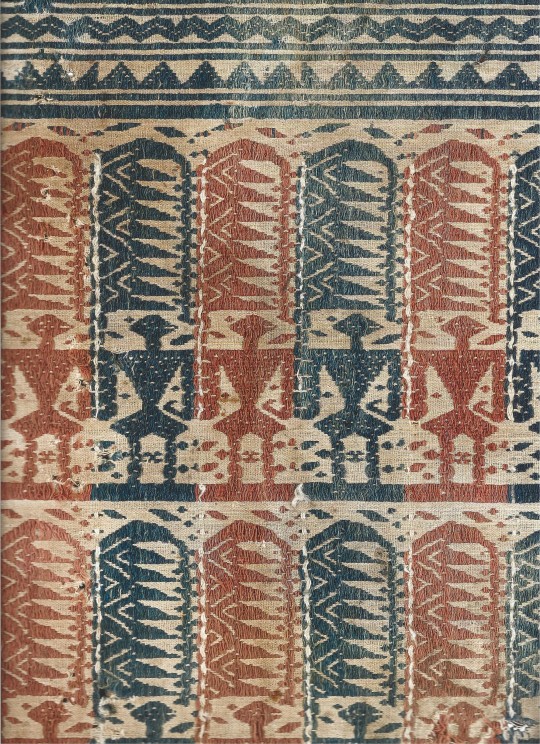
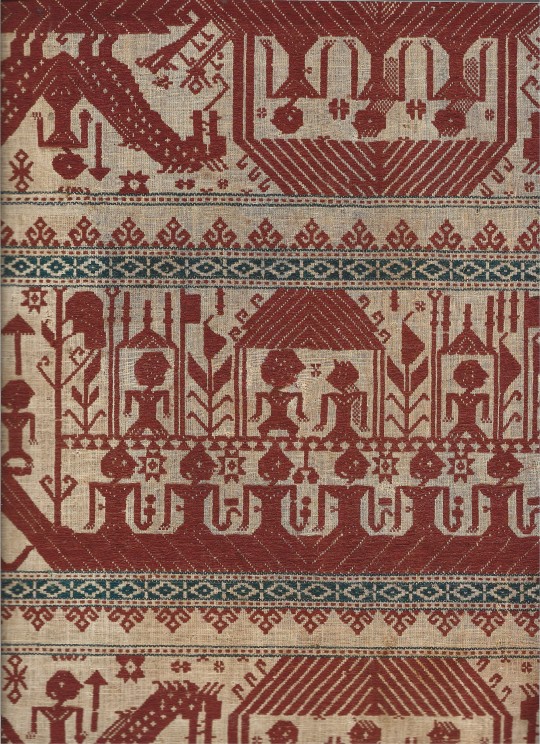

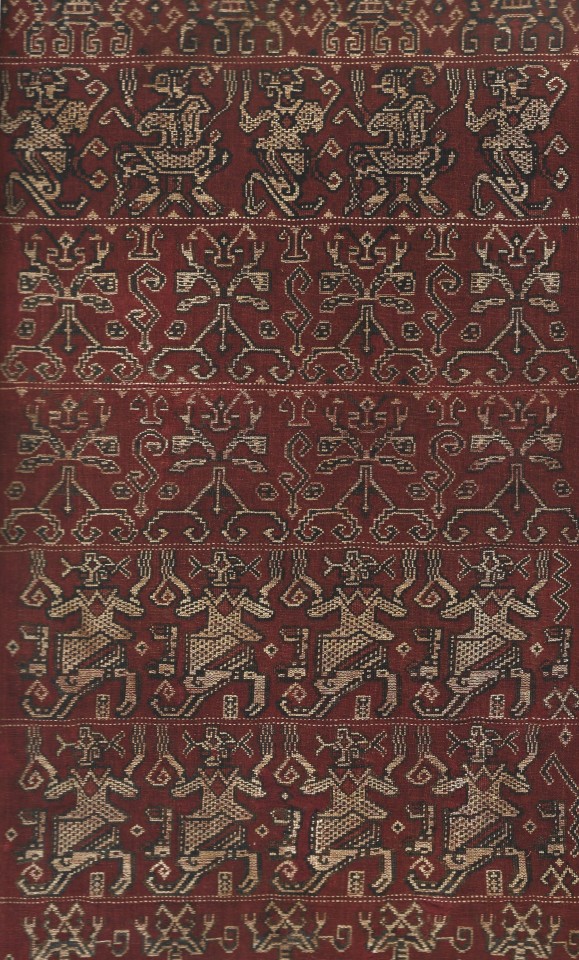
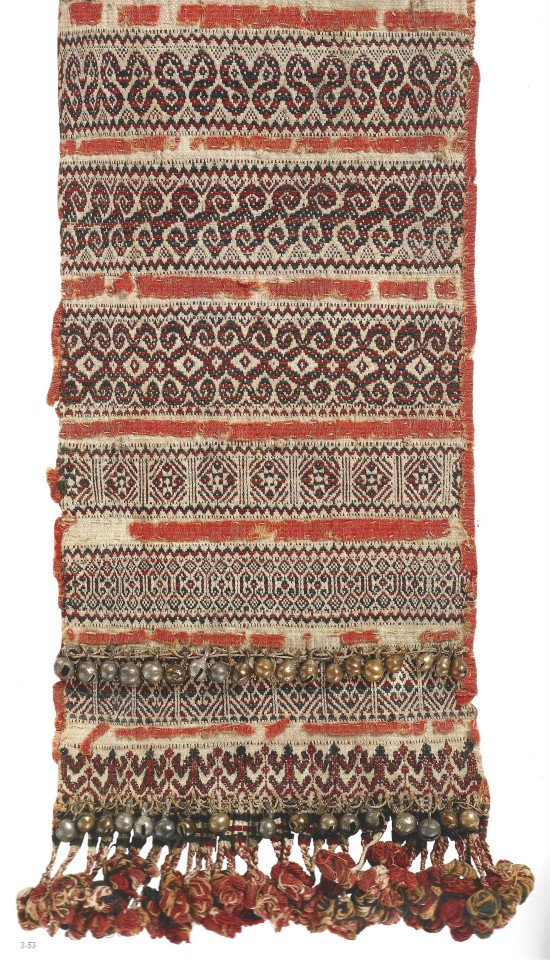


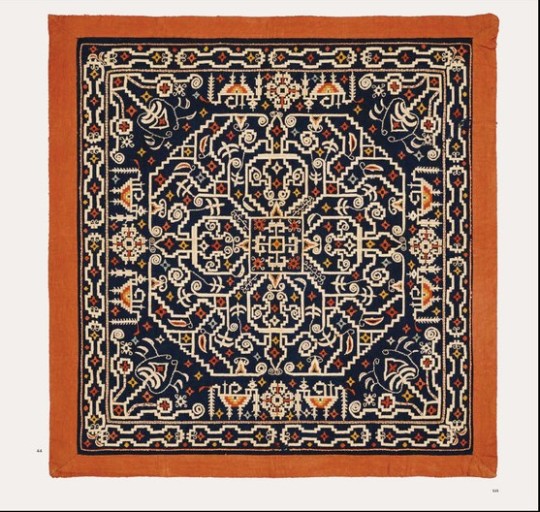
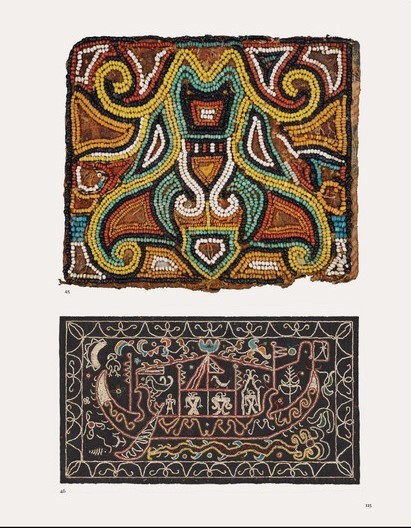
Textiles of Indonesia
The Thomas Murray Collection
Contributors: Lorraine Aragon, Joanna Barrkman, Chris Buckley, Kristal Hale, Valerie Hector, Janet Alison Hoskins, Itie van Hout, Eric Kjellgren, Fiona Kerlogue, Brigitte Khan Majlis, Robyn Maxwell, Thomas Murray, and Sandra Sardjono
Prestel, London 2021, 534 pages, 26,5x35cm, ISBN 9783791387659
€112,00
email if you want to buy [email protected]
Gathered over the course of four decades, the Thomas Murray collection of Indonesian textiles is one of the most important in the world. The objects comprise ritual clothing and ceremonial cloths that tell us much about the traditions of pre-Islamic Indonesian cultures, as well as the influences of regional trade with China, India, the Arab world, and Europe. As with the earlier volume, Textiles of Japan (Prestel, 2018), the book focuses on some of the finest cloths to come out of the archipelago, presenting each object with impeccable photographs. Geographically arranged, this volume pays particular attention to textiles from the Batak and the Lampung region of Sumatra, the Dayak of Borneo, and the Toraja of Sulawesi, as well as rare textiles from Sumba, Timor and other islands. Readers will learn about the intricate traditions of dyeing, weaving, and beading techniques that have been practiced for centuries. Original texts by international experts offer historical context, unspool the mysteries behind ancient iconography, and provide new insights into dating and provenance. At once opulent and scholarly, this book arrives at a moment of growing interest in Southeast Asian culture and carries the imprimatur of one of the art world's leading collectors.
02/11/23
#Textiles Indonesia#Thomas Murray Collection#Batak and Lampung region#Sumatra#Dayak Borneo#Toraja Sulawesi#Sumba textiles#Timor Textiles#Indonesian Textiles#textiles books#fashionbooksmilano
27 notes
·
View notes
Text
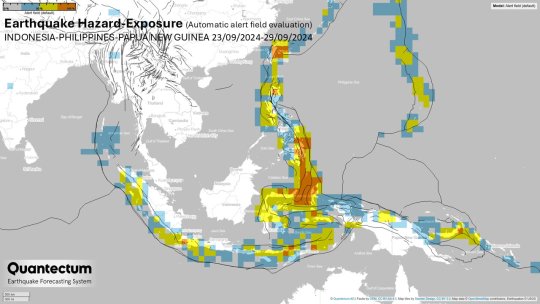
INCREASED (yellow): Seram, Kepulauan Batu-Kepulauan Mentawai, Sumatra, Sunda Strait, Java, Bali, Sumbawa, Timor, Flores, Kepulauan Tanimbar, Northern Philippines, Makassar Strait, Papua, Eastern Papua New Guinea, Ceram Sea.
HIGH (orange): Molucca Sea, Kepulauan Sanghe - Kepulauan Talaud, Minahasa, Sulawesi, Halmahera, Kepulauan Barat Daya - Kepulauan Babar, Mindanao and Leyte (Philippines), New Britain region (P.N.G), S Sumatra, Banda Sea, Kepulauan Alor.

During the week, the HIGHEST TECTONIC TRACTIONS will be present in: · Luzon, Leyte and Mindanao, Philippines · Kepulauan Talaud · Minahasa, Sulawesi · Sumbawa · Flores Sea · Nicobar Islands · Bali Region · Halamera · Molucca Sea Regions that will be the most tectonically unstable are: · Sumbawa, Sunda Strait, Kepulauan Tanimbar, Kepulauan Talaud, Halamera · Kepulauan Alor Philippines – northern, central, southern, New Britain Region (Papua), Papua New Guinea.
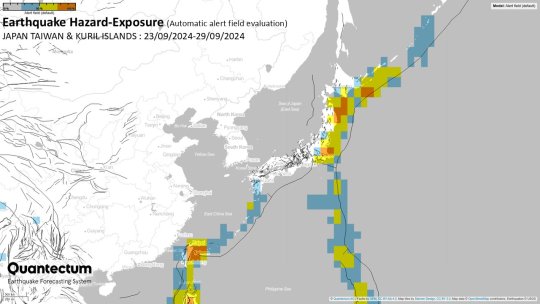
MODERATE: Kyushu, Shikoku, SE Ryukyu, Izu Islands. INCREASED: Kuril Islands, Volcano, Bonin Is, east of Kuril Islands. HIGH: off east coast of Honshu, near east and south coasts of Honshu, Hokkaido, Taiwan.

Due to the passage of strongly active tectonic waves, the active traction will be the highest along east Honshu, Hokkaido, Izu Islands, Kuril Islands, Taiwan, Volcano, Bonin Islands, southeast Ryukyu, and off east coast of Honshu.

According to instability alert field, the most tectonically unstable regions will be Taiwan, the Kuril Islands, near east and west coasts of Honshu and Hokkaido, due to the strong local Time-synchronizations along the regional fault system.
Courtesy of Quantectum - Earthquake Forecasting System
#地震#earthquake#earthquakes#日本#indonesia#philippines#papua new guinea#taiwan#seismology#geophysics#global#worldwide
4 notes
·
View notes
Text

Southeast Asian Sweet treats.
Ice green banana is from Indonesia, specifically from south Sulawesi. Besides that, everything can be found in any Southeast Asian country.
#illustration#digital drawing#food sketch#etsyshop#dessert#handrawn#sweet treats#southeast asian sweet treats#southeast asia#ice green banana#pisang ijo#thai dessert#vietnamese dessert#indonesian dessert#mango sticky rice
2 notes
·
View notes
Text
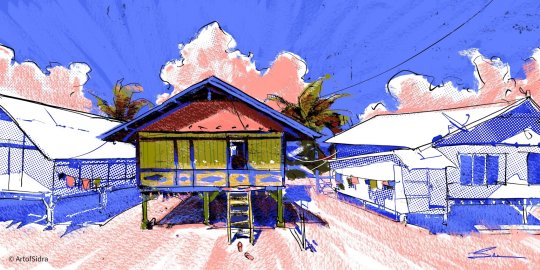
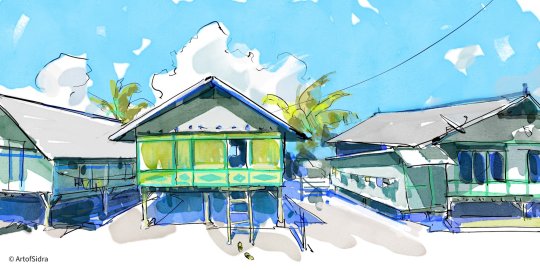
Southeast Sulawesi, Indonesia
#inktober 2023#inktober#digital painting#procreate#art#artwork#digital illustration#colorful#visdev#environmentart#illustration#indonesia
8 notes
·
View notes
Text
Round 2, match 4: skrunkly little guys
Aye-aye (Daubentonia madagascariensis)

A lemur you will likely all have heard of! They live in the canopy of tropical forests, weaving little nests to sleep in during the day. At night, they come out to feed- sometimes on fruits and seeds, but they’re most well known for their unique way of hunting grubs. By tapping their spidery fingers on wood, they can hear insects hiding within. When they find one, they chew a hole through the wood with their incisor teeth, before reaching in with their thin middle finger to fish out the grub. Yum?
Pygmy tarsier (Tarsius pumilus)

Tarsiers are tiny, nocturnal primates found in Southeast Asia. They may be cute, with eyes almost as large as their brains, but they are actually the most carnivorous primates. They hunt mostly small arthropods, like insects and arachnids.
The pygmy tarsier is perhaps the most unusual tarsier species. They are tiny, weighing less than two ounces, and they live in the highland forests of Sulawesi. They are also incredibly elusive- they are rare, and their calls are probably outside the range of human hearing. Because of this, they were not seen for eighty years, long assumed extinct since the 1920s. It was not until 2008 that a group of scientists were able to observe living members of this species, confirming they were still alive.
21 notes
·
View notes
Text
10 Must-See Attractions on an Indonesian Yacht
Indonesia is a paradise for adventurers and nature enthusiasts. From pristine beaches to vibrant coral reefs, dense jungles to ancient temples, this Southeast Asian gem offers a plethora of breathtaking sights and cultural experiences. For an authentic immersion into Indonesia's stunning beauty, embark on a captivating yacht journey that unveils the country's most remarkable attractions. Here are the 10 must-see destinations on an Indonesian yacht adventure

Raja Ampat: Begin your voyage in the Raja Ampat archipelago, a diver's paradise boasting unparalleled marine biodiversity. Explore the vibrant coral gardens, encounter rare sea creatures, and marvel at the crystal-clear turquoise waters that surround these remote islands.
Komodo National Park: Start an exciting journey to the captivating home of the famous Komodo dragons. Witness these magnificent creatures in their natural habitat and discover the park's diverse wildlife, picturesque beaches, and stunning underwater world.
Bali: Renowned as the "Island of the Gods," Bali presents a remarkable fusion of spirituality, verdant scenery, and lively culture. Visit ancient temples, indulge in traditional Balinese cuisine, and soak in the island's serene atmosphere.
Borobudur Temple: In Central Java, the awe-inspiring Borobudur Temple awaits. This UNESCO World Heritage Site is the biggest Buddhist temple globally, boasting intricate carvings and breathtaking architecture. Watch the sunrise over the temple for a truly magical experience.
Gili Islands: A short yacht ride from Bali, the Gili Islands offer idyllic tropical escapes. These three small islands—Gili Trawangan, Gili Air, and Gili Meno—boast pristine beaches, crystal-clear waters, and vibrant coral reefs, perfect for snorkeling and diving.
Flores: Explore the lesser-known island of Flores, home to picturesque landscapes and cultural treasures. Visit the tri-colored lakes of Kelimutu, encounter traditional villages, and hike to stunning viewpoints overlooking the island's volcanic peaks.
Tana Toraja: In the highlands of Sulawesi, Tana Toraja offers a glimpse into Indonesia's unique funeral traditions and intricate architecture. Marvel at the traditional houses known as "tongkonan" and witness the elaborate funeral ceremonies that are held here.
Thousand Islands: Just a short distance from Jakarta, the Thousand Islands (Kepulauan Seribu) offer a quick escape from the bustling city. These enchanting islands present immaculate beaches, transparent waters, and excellent snorkeling, diving, and fishing prospects.
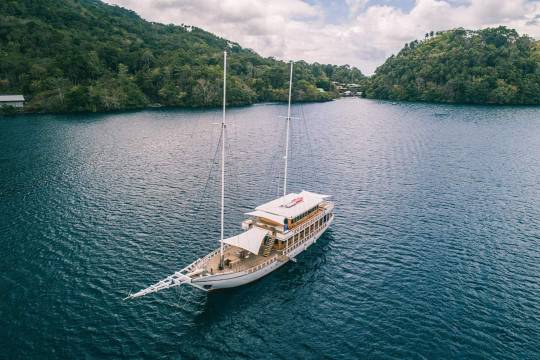
Wakatobi National Park: Dive into the underwater wonderland of Wakatobi National Park in Southeast Sulawesi. This aquatic haven is famous for its thriving coral reefs, diverse marine creatures, and exceptional clarity, making it a diver's paradise and an idyllic destination.
Mentawai Islands: The Mentawai Islands in West Sumatra are a must-visit for those seeking a surfing adventure. Ride the world-class waves and soak in the laid-back atmosphere of these remote islands, which are also home to indigenous Mentawai tribes.
While sailing through your Indonesian yacht expedition, you will be indulged with breathtaking views, captivating sunsets, and the liberty to explore at your leisure, moving from one destination to another. Your yacht's onboard luxury and comfort will make this journey even more memorable, allowing you to relax and unwind while traversing the stunning Indonesian waters.
Indonesia's rich cultural heritage and warm hospitality will enhance your experience throughout the trip. From engaging with amiable locals to savoring traditional delicacies, you'll have the chance to deeply immerse yourself in the local customs and forge enduring memories.
Additionally, the diverse marine ecosystems of Indonesia offer incredible opportunities for snorkeling and diving. Dive into the vibrant underwater realms teeming with colorful fish, graceful manta rays, and mesmerizing coral formations. Each dive will reveal a new world beneath the surface, showcasing the remarkable biodiversity of Indonesia's waters.
Onboard your yacht, you'll have access to experienced guides and crew members who will ensure your safety and make your journey seamless. They possess extensive knowledge about the local attractions and can provide insights into the history, culture, and natural wonders of each destination you visit.
Indonesia's enchanting beauty extends beyond the physical landscapes. The nation's diverse array of traditions, festivals, and art forms will enthrall your senses. From witnessing traditional dance performances to exploring local markets, you'll have ample opportunities to engage with Indonesia's vibrant cultural heritage.
Whether you crave adventure, tranquility, or a harmonious blend of both, embarking on an Indonesian yacht expedition is the ideal method to discover the country's must-visit landmarks. Each destination presents a distinct fusion of natural marvels, cultural gems, and heartfelt hospitality, ensuring an indelible experience that will linger with you even after your expedition concludes.
As your Indonesian yacht adventure concludes, you'll carry with you a profound appreciation for the stunning landscapes, diverse cultures, and incredible experiences that make this nation so captivating. From the remote islands of Raja Ampat and Komodo National Park to the spiritual haven of Bali and the ancient wonders of Borobudur Temple, Indonesia's allure knows no bounds.
#IndonesiaYacht#YachtAdventure#SailingIndonesia#IslandHopping#LuxuryYachting#OceanEscape#YachtLife#ExploreIndonesia#MarineParadise#YachtTravel#IndonesiaTravel#SailAway#ExoticDestinations#TropicalGetaway#IslandParadise#YachtCruise#IndonesiaExploration#BoatingLife#IndonesiaVacation#YachtExperience#SailTheArchipelago
2 notes
·
View notes
Text

🖼️ Early morning view from Wisma Puncak Biru, Wawonii Island
📍 Wawonii, Konawe Islands, Southeast Sulawesi
🗓️ November 2023
0 notes
Text
Yusuf Hendratno biography: 13 things about Mister Universe Indonesia 2024
Who is Yusuf Hendratno? Yusuf Hendratno is an Indonesian social media influencer and beauty king from Southeast Sulawesi, Indonesia. He earned his bachelor’s degree in communican and media studies from the Universitas Mercu Buana in Jakarta, Indonesia. Hendratno represented Indonesia in Man of the Globe International and Mister Universe. Here are 13 more things about him: From February 2016 to…

View On WordPress
0 notes
Text
The Growing Industry of Betel Nut Suppliers in Indonesia

Betel nut, often identified as Areca nut, is the nut of the Areca catechu palm and holds an crucial role in the custom and economic structure of several nations in Asia. The seed is chewed for its energizing benefits, particularly when blended with betel quid (a mixture of betel leaves and hydrated lime) or tobacco. Indonesia as a country, being one of the main cultivators of betel seeds, has grown into a major stakeholder in the international commodity chain for this resource.
In the country of Indonesia, masticating betel seed, known locally as "sirih pinang," possesses a rich history. It frequently employed in ceremonies, social gatherings, and medical treatments. Within provincial areas, especially in Sumatra, Borneo, and the island of Sulawesi, the tradition of chewing Areca seed is still firmly entrenched. The seed has a social and traditional meaning, often serving as a symbol of generosity or integrated in traditional ceremonies, like matrimonial events.
Financially, the farming of betel nuts supplies a source of income for numerous local farmers, especially in provinces for instance Aceh, West Sumatran regions, and the northern region of Sulawesi. For these communities, Areca palm seed serves as a valuable commercial crop, supplementing their financial means and having a crucial role in the economy of the region.
Indonesia's tropical humid weather, nutrient-dense soil, and vast shorelines create the optimum setting for betel palm trees to thrive. The farming process is straightforward and needs substantial effort, consisting of placing saplings, maintaining palm groves, and collecting the betel nuts after roughly five years. After they are harvested, the Areca palm seeds are usually dried, parboiled, or fermented, based on the regional practices and the economic demand.
The Indonesian betel nut industry features a wide-ranging supply network, involving small-scale farmers, domestic dealers, wholesalers, and exporters. In some cases, betel nuts are marketed fresh, but usually, they are dried to provide a longer shelf life and to accommodate the demands of overseas markets.
The global demand for betel seed, notably in nations such as the country of India, Pakistan, the island of Taiwan, and other parts of Southeast Asia, has grown in recent times. Areca seed is in high demand in these areas, where its consumption continues to be a cultural tradition, even with the rising knowledge of its potential health risks. The country of India is the main purchaser of Indonesian betel nuts. The Areca nuts are handled in different forms, such as entire nuts, halved nuts, or as powder, depending on the market requirements. The use of betel nut in making paan continues to be prevalent in the region of India, and betel from Indonesia is commonly favored for its superior quality and consistent supply.
Taiwan functions as another growing market for Indonesian betel nuts, where the habit of betel nut consumption is prevalent, especially among men in provincial zones. Merchants from Taiwan prefer Indonesian betel nuts due to their reduced costs in contrast to domestic production. Despite the financial prospects of the betel nut business, Indonesian producers struggle with several issues in enhancing their sales territories and enhancing their distribution networks.
In recent years, scientific studies have associated the consistent consumption of betel nuts with cancers of the mouth and additional health concerns, triggering issues about its safety profile. This has caused some places adopting enhanced regulations or even bans on the trade and consumption of Areca nut products. For example, Taiwanese authorities has rolled out strategies to reduce the consumption of betel nuts because of increasing incidents of oral cancer. Betel nut suppliers in Indonesia, consequently, confront the difficulty of managing these regulations while sustaining their international markets.
Even though the Indonesian betel nut industry is extensive, it is deficient in standardized quality measures and standardization processes. This can lead to inconsistent product quality, which impacts its overseas reputation. Some suppliers have begun embracing more stringent selection, grading, and packaging standards to secure steadiness, but the entire industry still has opportunities for enhancement.
As with many agricultural commodities, growing betel nuts creates concerns about forest destruction and ecological damage. In some regions, Areca palm plantations have grown into earlier forest-covered lands, leading to a reduction in species diversity and interruption of habitats. Addressing these sustainability challenges is imperative for the long-term viability of the industry.
Indonesia as a nation is definitely not the sole country growing betel nut. Several Southeast Asian states, such as Thailand, the Republic of the Union of Myanmar, and the island nation of Sri Lanka, too have thriving betel nut markets. Producers in Indonesia must maintain competitiveness by delivering top-quality goods, efficient supply chains, and competitive pricing to retain their presence in the worldwide market.
In spite of the hurdles, the future remains hopeful for the betel nut sector in Indonesia. The global market for Areca palm seed is foreseen to remain strong due to the deep-rooted traditions of consumers in critical markets. While countries such as India and Taiwan continue to require top-notch Areca seeds, producers in Indonesia are well-positioned to address this demand.
For the purpose of ensuring continued growth, Indonesian betel nut suppliers are concentrating on modernizing their production techniques, refining quality control, and exploring additional markets. Some businesses are putting funds into advanced systems and framework to enhance their operations and enhance operational efficiency. Additionally, there is growing interest in natural and ethically sourced products, which could create new opportunities for producers in Indonesia prepared to integrate eco-friendly practices.
The country of Indonesia's Areca nut industry is a major factor to both the regional and international economy. It provides livelihoods to countless smallholder farmers and meets the requirements of overseas markets, particularly in India and the island of Taiwan. However, hurdles such as public health challenges, regulatory issues, and market rivalry must be addressed for the industry to prosper in the long term. By concentrating on eco-friendliness, quality control, and new developments, Indonesian Areca nut manufacturers can keep to play a essential role in the global logistics.
0 notes
Text
The Man From Y.I.L.I.N.G.
Chapter 11 - RESEARCH FOOTNOTES
1. Information about the poison Jin Guangyao uses is from Source, which says: "见血封喉 (jiànxuěfēnghóu), literally "meets blood and seals throat", is another infamous poison and comes from the upas or poison arrow tree (Antiaris toxicaria). Once often used on arrowheads, when the poison contacts an open wound or blood, it brings nearly instant death." Source 2 says: "The latex of Antiaris toxicaria contains intensely toxic cardenolides, in particular a cardiac glycoside named antiarin. It is used as a toxin for arrows, darts, and blowdarts in Island Southeast Asian cultures. In various ethnic groups of the Philippines, Borneo, Sulawesi and Malaysia the concentrated sap of Antiaris toxicaria is known as upas, apo, or ipoh, among other names. The concentrate is applied (by dipping) to darts used in sumpit blowguns employed for hunting and warfare. In Javanese tradition in Indonesia, Antiaris toxicaria (also known as upas) is mixed with Strychnos ignatii for arrow poison." (Emphasis mine)
1 note
·
View note
Text
Indonesia Unveiled: A Journey Through Its Islands and History
Indonesia is a vibrant nation straddling Southeast Asia and Oceania, nestled between the Indian and Pacific Oceans. This sprawling archipelago is composed of over 17,000 islands, including major ones like Sumatra, Java, Sulawesi, and parts of Borneo and New Guinea. As the world’s largest archipelagic state and the 14th-largest country by land area, Indonesia covers approximately 1.9 million square kilometers. Home to over 280 million people, it's the fourth-most-populous country globally and the most populous Muslim-majority nation. Java alone, the planet’s most densely inhabited island, houses more than half of Indonesia's population.


Governance and GeographyIndonesia operates as a presidential republic with an elected legislature. It comprises 38 provinces, nine of which enjoy special autonomous status. Jakarta, the largest city, is also the world’s second-most-populous urban area. The country shares land borders with Papua New Guinea, East Timor, and eastern Malaysia and maritime boundaries with Singapore, Malaysia, Vietnam, Thailand, the Philippines, Australia, Palau, and India. Despite its bustling population, Indonesia boasts extensive wilderness areas rich in biodiversity.Historical OverviewThe Indonesian archipelago has been a hub of trade since ancient times. In the 7th century, Sumatra's Srivijaya and later Java’s Majapahit kingdoms were prominent in commerce with China and the Indian subcontinent. This historical trade influenced the rise of Hindu and Buddhist kingdoms, with the arrival of Islam in the 13th century gradually shaping the region’s spiritual landscape. The Portuguese arrived in 1512, followed by the Dutch, who established the Dutch East India Company in 1602. Dutch colonial rule lasted over three centuries, ending with Indonesia’s independence after World War II.Colonial Era and IndependenceThe Dutch East Indies’ colonial period saw sporadic Dutch control, with local leaders frequently challenging the colonizers.

The Japanese occupation during World War II disrupted Dutch rule and accelerated the push for independence. After Japan’s surrender in 1945, Indonesia declared its independence, with Sukarno and Mohammad Hatta leading the nation. Despite efforts to reassert Dutch control, Indonesia achieved full independence by December 1949.Post-War DevelopmentsIn the post-war era, Sukarno transitioned Indonesia from a democracy to an authoritarian regime. The 1965 coup attempt led to a violent anti-communist purge, resulting in the rise of General Suharto and his New Order government. Suharto’s administration, backed by the US, spurred significant economic growth but was marred by corruption and political repression. The 1997 Asian financial crisis severely impacted Indonesia, culminating in Suharto’s resignation in 1998.


Following democratic reforms, including regional autonomy and direct presidential elections, Indonesia has worked to stabilize and strengthen its economy.Modern IndonesiaToday, Indonesia is celebrated for its diverse ethnic and linguistic tapestry. The motto "Bhinneka Tunggal Ika" ("Unity in Diversity") reflects its rich cultural and religious pluralism. Although the nation continues to face challenges, including political instability and sectarian tensions, it remains a significant regional power with a robust economy and a deep cultural heritage.Explore Indonesia’s journey from its ancient civilizations through its colonial past to its current status as a dynamic and diverse country.
0 notes
Text
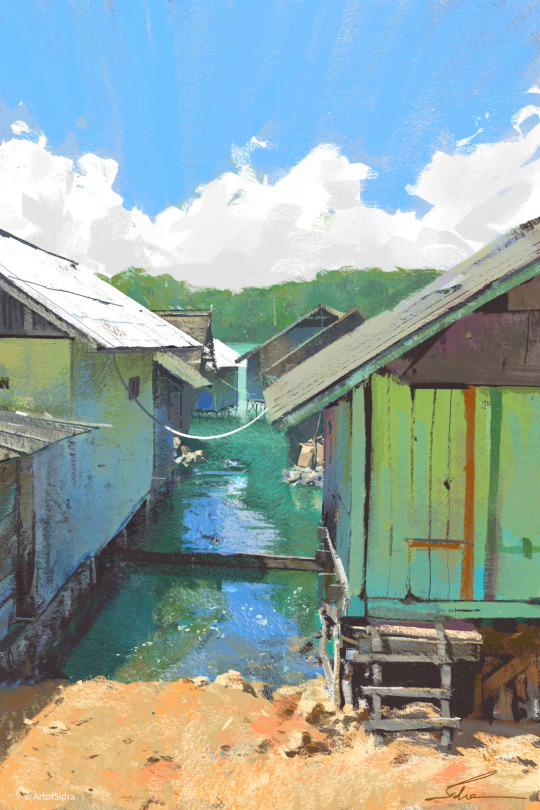
Southeast Sulawesi, Indonesia.
#digital painting#procreate#art#artwork#digital illustration#visdev#colorful#environmentart#illustration#visual development#indonesia#houses#background art#background#bg#chalk
5 notes
·
View notes
Text
Round 3, match 2: basal primates
Verreaux’s sifaka (Propithecus verreauxi)

These lemurs are very specialised for living in trees, eating mostly leaves and being capable of leaping ten metres from tree to tree. They also live in a variety of wet or dry forest habitats. Sifakas are so specialised for climbing they can’t walk on all fours like a ring-tailed lemur, nor can they stride bipedally like humans; instead, they move on the ground using an odd bipedal bounding motion.
Pygmy tarsier (Tarsius pumilus)

Tarsiers are tiny, nocturnal primates found in Southeast Asia. They may be cute, with eyes almost as large as their brains, but they are actually the most carnivorous primates. They hunt mostly small arthropods, like insects and arachnids.
The pygmy tarsier is perhaps the most unusual tarsier species. They are tiny, weighing less than two ounces, and they live in the highland forests of Sulawesi. They are also incredibly elusive- they are rare, and their calls are probably outside the range of human hearing. Because of this, they were not seen for eighty years, long assumed extinct since the 1920s. It was not until 2008 that a group of scientists were able to observe living members of this species, confirming they were still alive.
13 notes
·
View notes